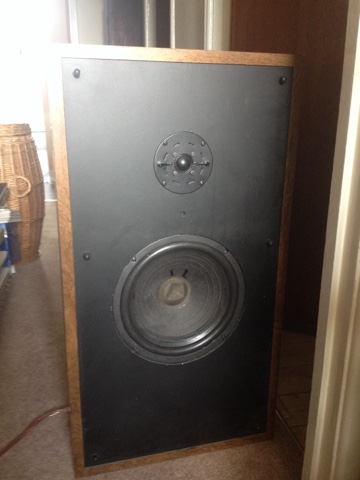While the glue is setting, I'm busy trying to set up the crossovers and a suitable DAC unit. It won't be the first item tested, I'm going to measure the speakers with the original passive crossover before I do that!
 |
| AU Lab in action! |
In order to check out the overall approach, I'm using my MacBook Pro to implement a first pass at a digital active crossover. I'm doing this using the highly amusing AU Lab application, an Apple tool that allows one to configure an input and output set in a "document", and apply Audio Unit plug-ins as effects in the various positions. Basically, my document has 1 stereo input, and two stereo outputs, to which I've applied HP and LP Linkwitz-Riley crossover filters with an initial -24dB/octave slope, at the 2000Hz that these speakers are apparently constructed with.
You can see the document template (Studio window above), which has the input set to built-in mic (I override that) and two output channels, assigned to channels 1-4 of the Saffire DAC.
I've configured an additional input, using the AUAudioFilePlayer plug-in, that sources digital audio from a list of specified files. This is routed to output groups 1 and 2, so both woofers and tweeters get full-range signal. The setup for that is in the Generator 1 window.
The channels labelled Woofer and Tweeter have the crossovers set up in their effects link, using the AU Crossover plug-in I found in the interweb. The settings can be seen in the respective windows.
Listening to the Saffire outputs with headphones (yes, they're that high a level!), the crossovers are clearly working. I'm surprised how high the woofer signal goes, but then, I am deaf from 10kHz up, and this does cut off at 2kHz! The tweeter signal clearly has no bass or mid, again it's surprising how little seems to have gone until you compare it with the woofer signal. Marv. Now back to the speaker mines...
I've also implemented a simple Stereo In/Stereo Out setup so I can test the speaker(s) with the existing passive crossovers.























